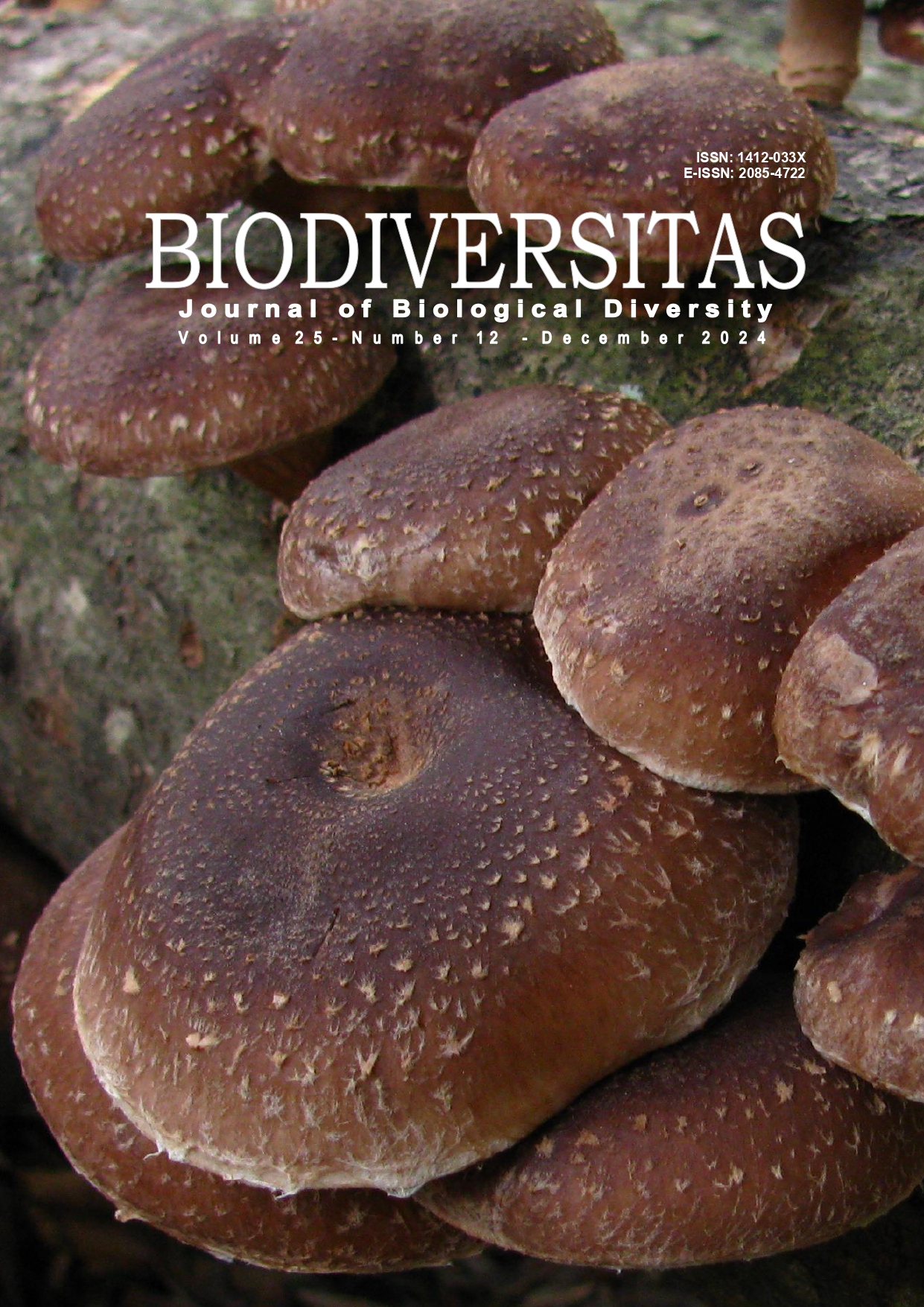Rapid assessment of a thrips outbreak on shallots in Brebes and Tegal, Central Java Province, Indonesia
##plugins.themes.bootstrap3.article.main##
Abstract
Abstract. Ananda S, Triwidodo H, Anwar R, Sartiami D. 2024. Rapid assessment of a thrips outbreak on shallots in Brebes and Tegal, Central Java Province, Indonesia. Biodiversitas 25: 5024-5030. One of the high-economic-value crops extensively cultivated by farmers in Indonesia is shallots. The cultivation of shallots often faces problems from plant pests and diseases, which can decrease productivity. One of the pests infesting shallots is thrips. In September 2023, a thrips outbreak was reported in shallot fields in Brebes and Tegal Districts, Central Java Province, Indonesia, causing significant losses for farmers, with severe infestations leading to crop failure. Typically, the beet armyworm Spodoptera exigua (Lepidoptera: Noctuidae) is the primary pest causing significant losses in shallot commodities in Brebes and Tegal. Prior to 2023, thrips were considered secondary pests and rarely caused severe damage. This research aims to investigate the history of thrips infestations based on interviews with 40 farmers, determine the pest population level using pest counts, and identify thrips to species. The research findings indicate that while farmers' knowledge about thrips still needs to improve, there is a significant potential for enhanced thrips management. The farmers’ knowledge, perspective, and actions significantly affect the thrips population in the fields. Farmers in Tegal exhibited more thorough knowledge of thrips management than those in Brebes, where thrips populations were higher. Climatic factors, such as increased temperatures and decreased rainfall, contributed to the rise in the thrips population. Farmers' adaptation strategies to cope with thrips outbreaks include increasing the frequency and dosage of pesticide spraying, early harvesting, and abandoning infested fields, which results in crop failure. The thrips species causing shallot damage in Brebes and Tegal was Thrips tabaci (Thysanoptera: Thripidae).

